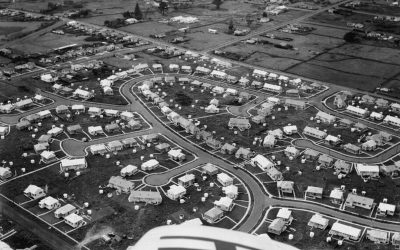IF you survived Katrina but your house didn’t, you might today be living on your lot in a trailer provided by the Federal Emergency Management Agency (FEMA). However ignominious, even trashy, these 300 square-foot rectangles on wheels might look, they do offer somewhere to sleep, shower, watch TV, and stash your stuff while you rebuild your home. But if you’re among the 300,000 families still homeless in the Gulf Coast region this spring, you might be lucky enough to get one of the 40,000 U.S. Senate-approved Katrina Cottages (www.cusatocottages.com) that could be built this summer.
A hit at the 2006 International Builders Show back in January, the Katrina cottage comes in several design variants with a style architect Marianne Cusato describes as, “vernacular Gulf Coast.”
“It’s a dignified alternative to the FEMA trailer,” says Cusato on the phone in her apartment in Manhattan’s West Village. Traditional home styles in the Gulf Coast Region inspired her designs, which feature a large, eight-foot-deep porch, upright casement windows, and pitched tin roof. Some floorplans include a 308 square foot studio, a one-bedroom of the same size, and a 434 square-foot two-bedroom. With bunk beds, even the smaller houses might accommodate four people.
“Human nature is actually to look for a small, cozy place,” says Cusato, whose Manhattan apartment, no larger than a Cusato Cottage, lends her a certain hands-on expertise in designing small spaces. But she grew up in Anchorage amid Alaska’s wide-open spaces, from where she visited Washington, D.C., and San Francisco in her youth. Falling in love with those cities’ traditional buildings, she went on to study architecture at the University of Notre Dame in South Bend, Indiana.
“Notre Dame,” she says, “teaches traditional and classical architecture, which taught me to articulate what it is about a building that makes it resonate through time.”
Indeed, another of her notable projects is a design alternative to the proposed Alaska state capitol, featuring a set of domes reminiscent of the many Russian Orthodox churches — many of which stand today — that were among the first structures erected in Alaska. Her forthcoming book, Get Your House Right: How to Avoid Common Mistakes in Today’s Traditional Architecture, contains a forward by England’s Prince Charles, whose neo-traditionalist, new urbanist Poundbury Village is a manifestation of his strong views critical of post-war planning and architecture.
Never mind Katrina, some New Urbanists contend that post-war suburban development and its attendant car culture constitute a much bigger economic and aesthetic disaster. John Norquist, president of the Congress for New Urbanism, was mayor of Milwaukee from 1988 until 2004 and is credited with transforming his city’s reputation from rustbelt backwater to modern, Midwestern metropolis.
When I reached him via phone at his office in Chicago, where he now lives, Norquist explained how he did it. Downtown, one-way streets were converted back to two-way traffic, and parking restrictions were lifted. Surface-level parking lots were targeted for development by any means necessary.
“You have to stop permitting new surface lots,” he says. “If land goes on the market, the guy who buys it can’t pave it. There’s nothing more permanent than a temporary parking lot.
“But if you want to get rid of the old ones you have to pay — that’s a legitimate use of eminent domain,” he says, referring to a legal practice known in Canada as expropriation. Parking lots can then be broken into smaller lots, and sold to developers under the stipulation that they must be built upon, and not used for parking.
Most audaciously, however, Norquist was behind the decision to demolish Milwaukee’s Park East Freeway, freeing 26 acres of downtown land that’s being developed according to New Urbanist principles: Mixed storefront-apartment buildings four- to six-storeys high, three-storey rowhouses, and landmark buildings up to 20 storeys high.
A few years ago, as a guest of the Frontier Centre for Public Policy, Norquist had the chance to meet then-mayor Glen Murray, who is often credited as having a “visionary” approach to Winnipeg’s future. Norquist’s opinion is that, despite Murray’s claims, our former mayor was no friend of the late author (and new urbanist inspiration) Jane Jacobs.
Eliminating parking restrictions and converting Winnipeg’s downtown streets back to two-way traffic could be accomplished inside of a week, if city hall were serious about bringing retail prosperity back to our city centre. But Mayor Sam Katz, like his predecessor, tries to be too many things to too many people, and thus remains rudderless, clueless, and ineffectual. Tax-tweaking alone won’t suffice; big changes to the physical makeup of our city are necessary to undo the mistakes of our modernist past. For so long as we fail to do so, the disaster that shut down the once-impressive retail and entertainment presence — indeed, the urban life — along Portage Avenue and Main Street will only continue to worsen.


